Zurbarán's “Jacob and His Twelve Sons”
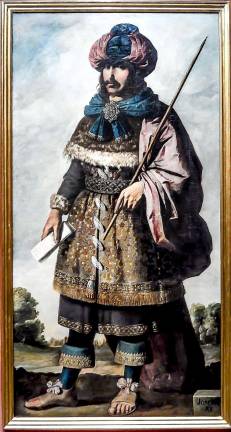
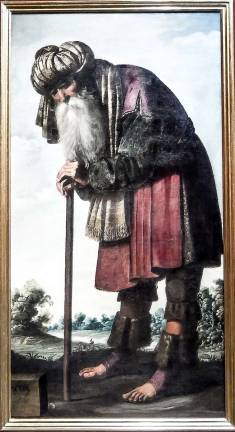
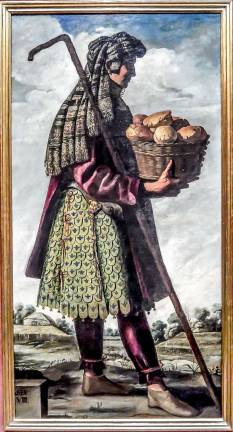
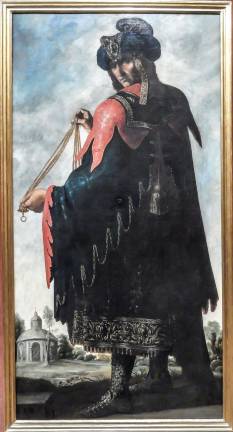
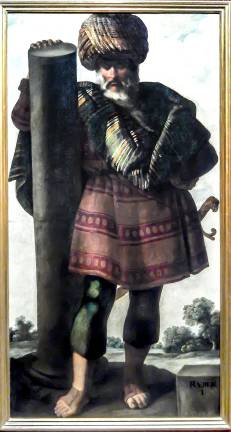
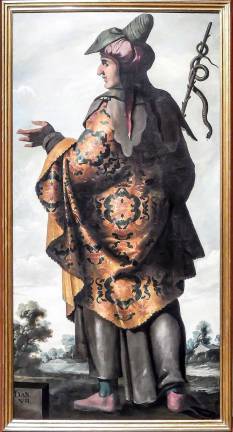
BY MARY GREGORY
“Gather around, that I may tell you what will happen to you in days to come. Assemble and hear, O sons of Jacob; listen to Israel your father.”
So begins the blessing of Jacob, the Israelites’ patriarch (Genesis 49:1-2). The prophetic nature of the father’s blessings on his sons played out across history as the formation of the Twelve Tribes of Israel. It plays out in art in an exhibition filled with poetry and grace through a series of paintings by the Spanish Baroque master, Francisco de Zurbarán, on view at The Frick Collection.
Zurbarán (1598-1664) is known for large and epic or small and intimate paintings that combine sharp contrasts of dark and light with stark beauty. With crisp whites of infinite tonality, startling precision in the depiction of objects and textures, and realistic, recognizably human subjects, the painter both captured and refined visual vocabularies of artists like Caravaggio and Dürer. Along with his contemporary, Diego Velázquez, Zurbarán formed and defined Spain’s Golden Age of painting.
The Frick’s exhibition brings together 13 larger-than-life portraits, “Jacob and His Twelve Sons,” that tell profound stories and hold tantalizing mysteries. It’s believed that the works were intended to be sold in Spain’s colonies in Latin America. The artist had placed similar works in both Buenos Aires and Lima. Although painted in the 1640s, though, their whereabouts prior to about 1720 is unclear.
“I love the old romantic theory that they were en route to Latin America, where we think they were destined, and they were interrupted by pirates and brought to England,” said Susan Galassi, the Frick’s senior curator, who organized the exhibition along with Mark A. Roglán and Amanda Dotseth of Dallas’s Meadows Museum. “That was an early 20th century theory, and I wish we could hold onto it, but there was just not enough evidence for that.”
Does that mean there’s not enough evidence to disprove it, either? “There are no shipping records,” Galassi said. “They would have existed. I think we can probably dispense with that nice theory and take a different view, which is what people generally believe today, that they stayed in Spain.”
But they weren’t in Zurbarán’s inventory when he died. So, where were they? Zurbarán was renowned. His works were costly. “Had they been on public display, there would have been some comment on them, somewhere. So, we don’t know. Maybe they were in a warehouse off view somewhere.... It’s really hard to speculate, but I think it’s probably likely, for reasons unknown, that they didn’t leave Spain until they arrived as a part of a consignment with other Spanish paintings under the direction of Chapman in the 1720s,” Galassi suggested, adding “Zurbarán did work in series throughout his life. This is different in two ways. The subject is different. It’s from the Hebrew Bible, the Old Testament, and there was not much call for that in Spain. And secondly, it has remained intact.” Possibly, its humble start, hidden away, protected it. The Spanish Inquisition was active during the 1600s. “Maybe,” said Galassi, “it was protected by being off view.”
Twelve of paintings were bought in 1756 by the Bishop of Durham, Richard Trevor, and were held by the Church of England at its bishopric palace, Auckland Castle, for over 250 years. Trevor, an ardent supporter of religious tolerance, supported both Jewish and Catholic rights in England. Those 12 works are on loan from The Auckland Project, a philanthropic initiative by the financier Jonathan Ruffer, who acquired both the paintings and the castle to preserve them for England. The thirteenth, a painting of Benjamin, from the collection of Grimsthorpe Castle, is reunited in the exhibition for the first time.
The suite of paintings, each distinct, each with unique features and symbols, each richly rendered with lushly defined garments, evocative background landscapes, and careful depictions of expression, comprise a remarkable feat of storytelling. From Joseph’s rich coat of many colors, to Asher, who carries a gorgeously painted basket of breads (testament to Zurbarán’s love of still life), to somber Jacob, the father, given the name Israel by God (Genesis 32:28), hunched with age and leaning on a staff, they are filled with power and resonance.
This is what Galassi hopes viewers will discover. “The beautiful way in which the poetry of the blessings is manifested in the paintings.... I think the part that moves me most is the beautiful words that Jacob utters, ‘Gather ye together, ye sons of Jacob. Listen to Israel your father.’ And to me the whole ensemble is an embodiment of those words. It’s a gathering. Zurbarán created a gathering. He embodied the words, in creating this whole series to come together in one room. I think there’s even an auditory component. He’s saying ‘listen.’ In each one of them you read the beautiful biblical text and you hear it, and then you look and you see how he embodied the words.”